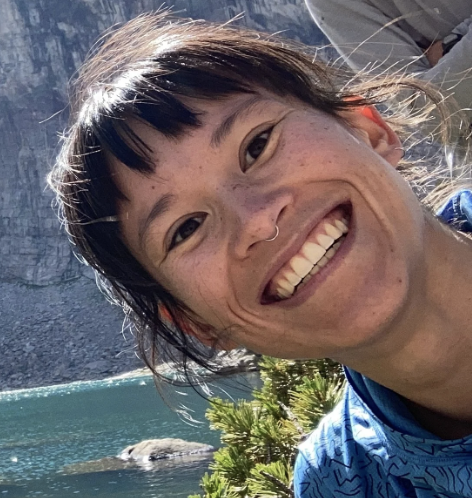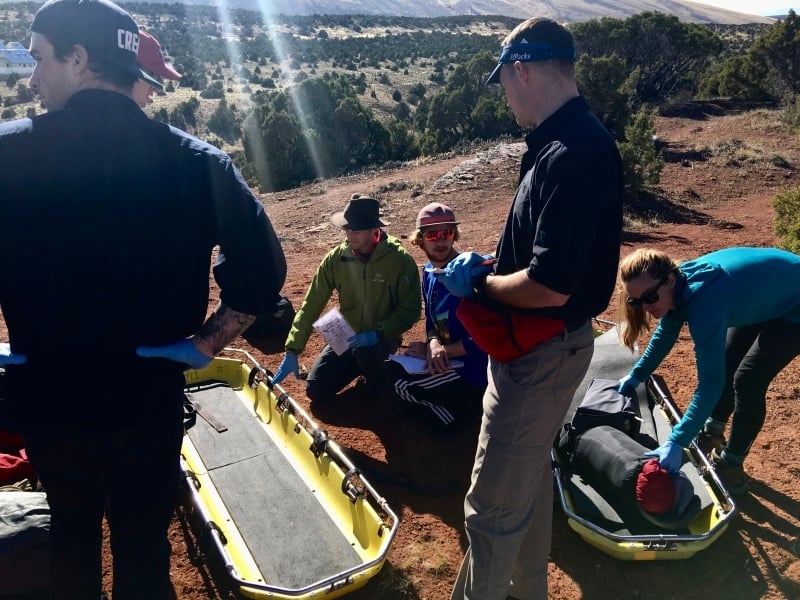I found myself patient-side during an intensive and grueling scenario at the Wyss Wilderness Medicine Campus in Lander, Wyoming.
“Keep holding still, you’re doing great,” I told Anna. Our eyes met as I held her hand and she took panicked breaths through the non-rebreather that was pressed against her face, filling her lungs with oxygen. Bright red blood was beginning to seep through the large pressure dressing I was holding against her abdomen to cover the 6-inch laceration there. We needed to move, but the single, tunnel-like entrance to the mine was blocked by other screaming patients on backboards and teams of rescuers, with only their headlamps visible in the thick, chalky smoke.
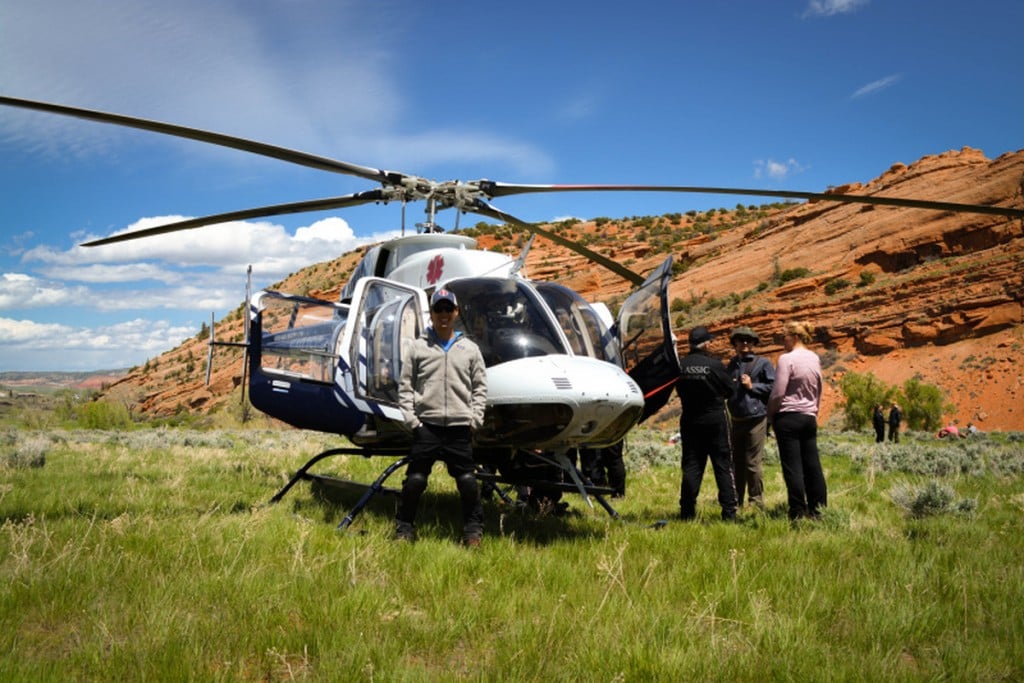
Photo courtesy of Andy Burdin.
I found myself patient-side during an intensive and grueling scenario at the Wyss Wilderness Medicine Campus in Lander, Wyoming.
“Keep holding still, you’re doing great,” I told Anna. Our eyes met as I held her hand and she took panicked breaths through the non-rebreather that was pressed against her face, filling her lungs with oxygen. Bright red blood was beginning to seep through the large pressure dressing I was holding against her abdomen to cover the 6-inch laceration there. We needed to move, but the single, tunnel-like entrance to the mine was blocked by other screaming patients on backboards and teams of rescuers, with only their headlamps visible in the thick, chalky smoke.
“The mine is going to collapse in three minutes,” cracked a voice over the radio on my shoulder. I looked at Anna again, with her eyes welling up with panic as my colleagues continued their assessment and realized how urgent this situation was. We were out of time—how do we move this critically injured girl out of the danger zone, navigate the narrow space that’s barely big enough for one person, and keep her as immobilized as possible?
My introduction to NOLS came several years ago when I first moved to Colorado. As someone who loved to camp, backpack and hike, I took the NOLS Wilderness First Aid course at the Boulder REI in 2011. That summer weekend left me feeling incredibly excited about wilderness medicine. But the idea of getting a Wilderness First Responder (WFR) certification was still a dream and beyond that, the lofty Wilderness EMT (WEMT) certification? Plainly unattainable.
I was sold. Before I knew it, I was packing my bags for the month-long WEMT course, not knowing exactly what I was getting into.
However, two years later, I found myself registering to take a WFR course. My instructors Jake and Tim were outstanding. And those nine days spent upgrading my knowledge made me feel empowered and confident to deal with medical problems in the outdoors.
Dream achieved. Still, WEMT ... no way.
Despite how I felt about finding the time for a WEMT course, over the next six months, I chatted with friends in the National Park Service, various guides, search and rescue professionals, outdoor leaders, basically anyone who would listen, about my training. I wanted to know as much as I could about becoming more involved in my community through outdoor medicine.
All of them said nearly the same thing—WFR is great training and gives you a solid base; NOLS Wilderness Medicine provides outstanding, next-level skill ... however, becoming a Wilderness EMT separates the professional from the enthusiast.
I was sold. Before I knew it, I was packing my bags for the month-long WEMT course, not knowing exactly what I was getting into.
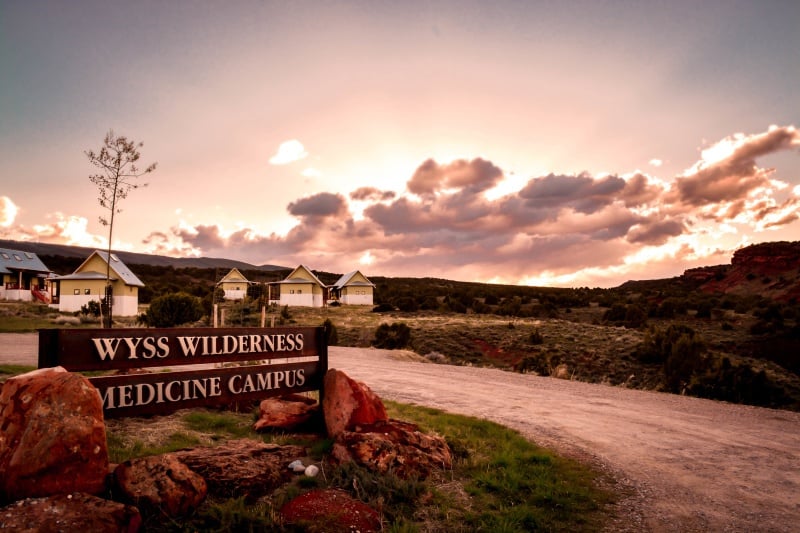
Photo courtesy of Andy Burdin.
Over the next 25 days at the Wyss Wilderness Medicine Campus, I joined 27 other folks from all over and bunked up in the (surprisingly) comfortable cabins, filling our days with emergency medicine. We learned (and for some, refreshed) the ins and outs of patient assessment, wound management, splinting, AED use, oxygen administration, caring for medical and trauma patients, and more.
Within three days, it became crystal clear how intensive this course is.
Classmates who had taken urban EMT courses at other organizations and schools across the country noted how much more realistic, scenario-heavy, and practical the NOLS Wilderness Medicine WEMT course was over anything they’d seen previously.
Fortunately, taking a WFR had prepared me for a lot—I knew how much time I’d be spending outside, either as a patient or rescuer. I knew the structure needed to give a precise verbal SOAP report over the radio. I carried notepads (or Sharpies for writing on nitrile gloves in a pinch) to track a patient's vital signs and create my SOAP notes (a summary of the patient assessment).
It made me grateful for the training I’d received in all three of my wilderness medicine courses, as each built upon the last and put everyone who attended in a position of knowledge to help people in need.
Finally, after a long, exciting (and stressful) month, we came to our last day. I felt proud to walk up to our instructors Brian, Laura, and Marcio, receive my certificate of course completion, and shake their hands. Then I sat back down in my chair and took a moment to reflect on exactly where I was.
It made me grateful for the training I’d received in all three of my wilderness medicine courses, as each built upon the last and put everyone who attended in a position of knowledge to help people in need.
Not too long ago, I’d finished Wilderness First Aid and then Wilderness First Responder courses, all the while drooling over the “unattainable” WEMT course, talking to people who had taken it and looking at videos and pictures of folks sitting in the exact room I was in. And now, here I was.
My time in Wyoming concluded with me passing the National Registry of EMT (NREMT) exam and saying goodbye to instructors and classmates turned friends. Then, of course, driving home.
Not two hours after learning I’d successfully passed the NREMT exam, I was driving around Denver and noticed two cars with smashed bumpers angled oddly at an interstate off-ramp near my house. I turned around and parked a safe distance away. After ensuring the scene was safe, I grabbed a pair of gloves from my console and approached the driver’s side of the closest vehicle.
I collected myself, took a deep breath and said “I’m Andy, I’m an EMT and I can help you ... is anyone hurt?”
Note: everyone in the vehicles was perfectly fine, with no injuries. I stayed on scene until Denver Police arrived and they thanked me for stopping.
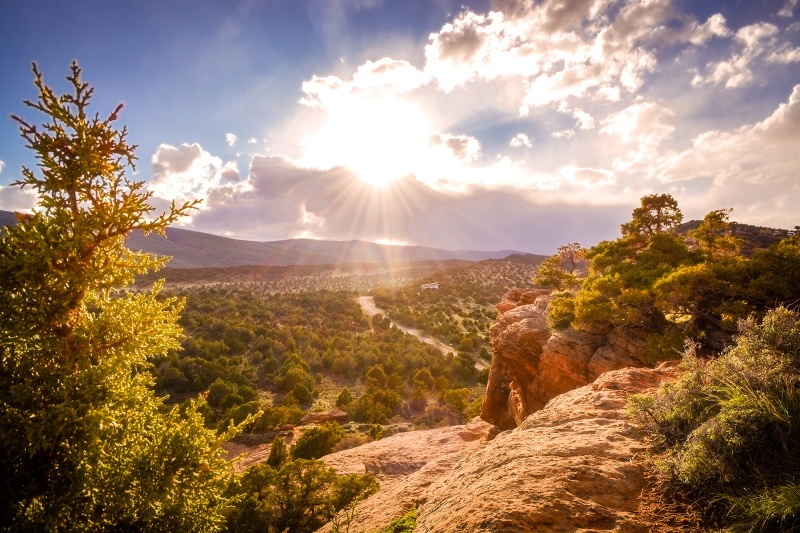
Photo courtesy of Andy Burdin.
- Alumni
- Wilderness Emt
- Wfa
- Wfr
- Wilderness First Responder
- Wilderness First Aid
- Education
- Wemt
- Wilderness Medicine


